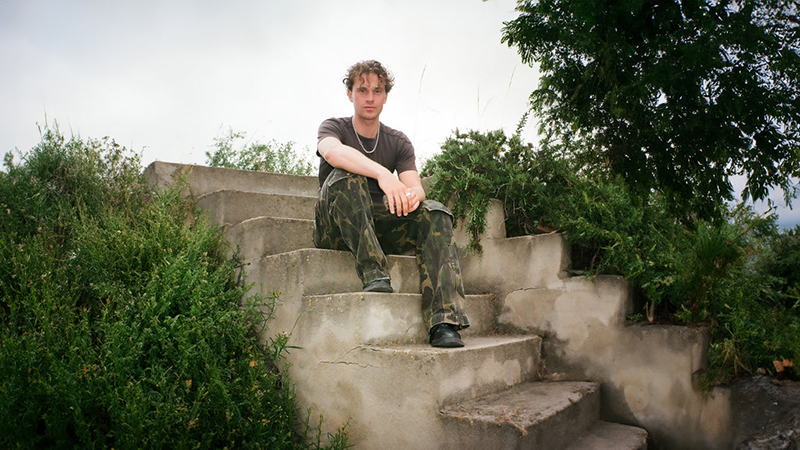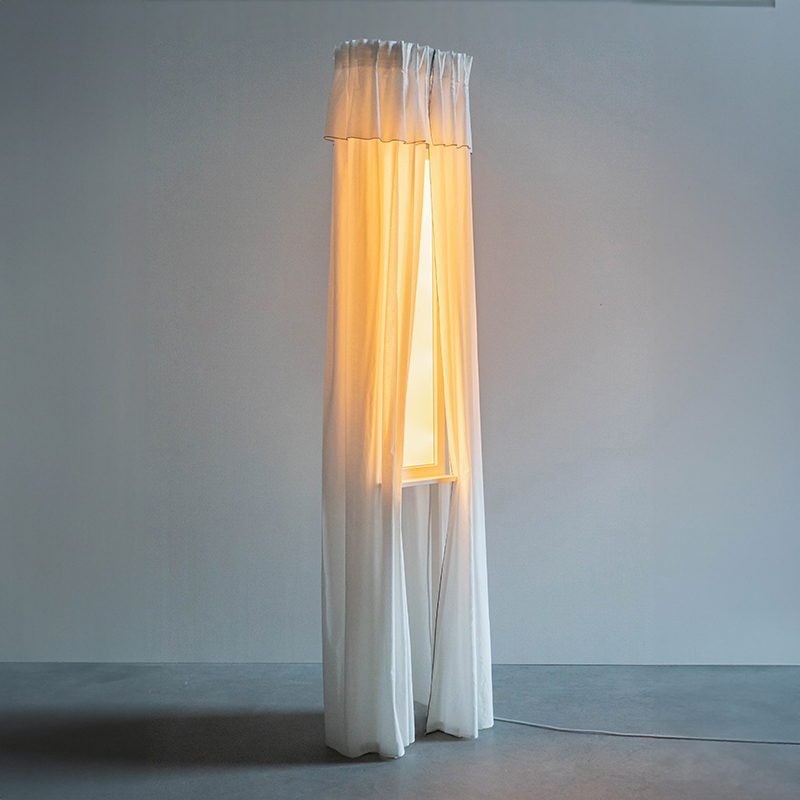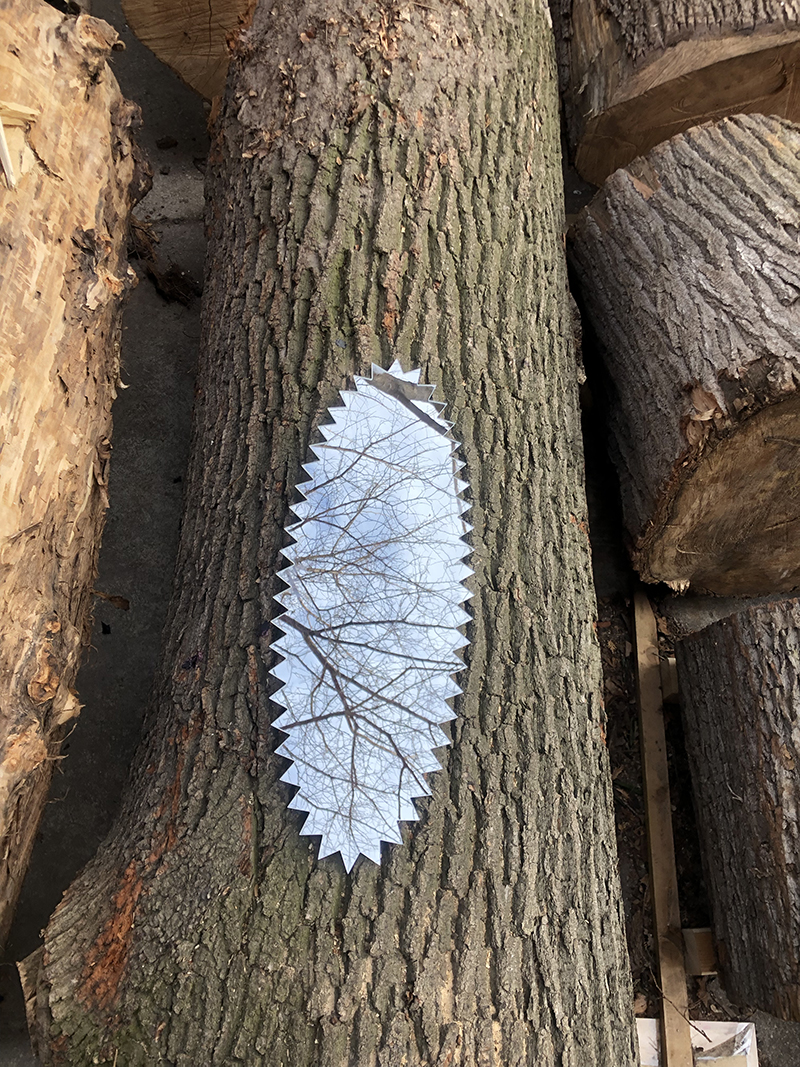NYC, 30.09.2024

Anton Defant es un diseñador alemán cuyo trabajo se sitúa en la intersección entre el arte y el diseño, creando piezas que él mismo describe como “esculturas funcionales”. Formado en diseño, Defant se sintió atraído por los objetos que no encajan en categorías convencionales, buscando siempre añadir una dimensión emocional o narrativa a sus creaciones.
Anton Defant is a German designer whose work lies at the intersection of art and design, creating pieces he describes as “functional sculptures.” Trained in design, Defant was drawn to objects that don’t fit into conventional categories, always seeking to add an emotional or narrative dimension to his creations.

¿De dónde surgió el concepto de «esculturas funcionales» en tu trabajo, y qué te atrajo a esta intersección entre funcionalidad y arte?
Descubrí este cambio a mitad de mis estudios. Me di cuenta de que me aburría la concepción clásica del diseño de productos y me sentía atraído por objetos con apariencia de artefactos que no fueran puramente arte ni productos. La capacidad de ser funcionales y existir en un hogar, sirviendo a un propósito tradicional, me pareció la entrada perfecta a la vida de las personas para crear obras más conceptuales y con alma. Desarrollé un deseo por los «objetos que hablan», algo que busco crear en todas sus formas y matices. Para mí, un objeto debe contar una historia, ya sea sobre su fabricación, la historia del ’Campamento’, o incluso hacer un chiste. Esta noción puede ser sutil, pero siempre busco que cada diseño tenga relevancia intelectual o emocional.
Where did the concept of «functional sculptures» originate in your work, and what drew you to this intersection between functionality and art?
I discovered this shift midway through my studies. I realized that I was bored with the classical conception of product design and felt drawn to artifact-like objects that were neither purely art nor products. The ability to be functional and exist in a home, serving a traditional purpose, seemed like the perfect entry point into people’s lives for more conceptual, soulful creations. I developed a desire for «speaking objects,» which I aim to create in all their nuances. This notion can be very subtle, but if I’m designing a chair, I want it to tell a story about its making, the history of camping, or simply make a joke—I want it to have intellectual or emotional relevance in some form. As for the separation between sculpture and product, it may appear as one or the other depending on individual perspectives, and that is what I find most interesting.

En proyectos como Mayfly, trabajas con materiales encontrados de manera improvisada. ¿Cómo impacta este enfoque en tu proceso? ¿Sientes que redefine el papel del diseñador, pasando de creador controlado a facilitador que responde a lo que los materiales presentan?
Este proyecto puede entenderse como un collage, una práctica simple, de guiarte por lo que encuentras. Originalmente, comenzó con mi amigo Benjamin Nagy como un esfuerzo colaborativo para desprendernos del rol todopoderoso del diseñador, que, a nuestro entender, lleva a un show-off innecesario. Creemos que ninguna idea es verdaderamente original. En este sentido, pienso que un buen diseño siempre ha consistido en facilitar y tomar decisiones basadas en lo que tienes frente a ti. Es una tendencia reciente que los diseñadores pierdan el sentido del tacto y la razón, sintiéndose perdidos en la sobresaturación de nuestra cultura de productos distorsionados.
In projects like Mayfly, you work with found materials in an improvised manner. How does this approach impact your process? Do you feel this redefines the designer’s role, shifting from a controlled creator to a facilitator responding to what the materials present?
This particular project can be understood as collaging—a rather simple practice of being guided by what you find. It originally started with my dear friend Benjamin Nagy as a collaborative effort to let go of the almighty role of the designer, which, in our view, leads nowhere but to pointless show-off. We believed that no idea is truly original. In this sense, I think good design has always been about facilitating and making decisions based on what lies before you. I believe it’s a more recent development that designers are losing their sense of touch and reason, feeling lost in the over-saturation of our distorted product culture.



Dimmer invita a una interacción táctil directa pero poco convencional con la luz. ¿Qué te fascina de este compromiso manual y cómo crees que altera la relación del usuario con el objeto?
«Dimmer» se concibe como una instalación experimental que simboliza una secuencia de momentos sensoriales diferentes: tocar la fuente de luz, deslizarla sobre el vidrio y cambiar la luminosidad de la habitación. Estos objetos se acercan a la funcionalidad desde una perspectiva distinta a la de simplemente «servir» un propósito. Creo que la interacción lúdica con un objeto cotidiano, especialmente la luz, que es un aspecto extremadamente emocional del diseño, crea una jerarquía equilibrada. Estos encuentros otorgan al objeto un tipo de alma o independencia, algo que siempre busco al crear.
Dimmer invites a direct yet unconventional tactile interaction with light. What fascinates you about this manual engagement, and how do you think it alters the user’s relationship with the object?
„Dimmer“ is conceived as an experimental setup. It symbolizes a sequence of different sensory moments: touching the light source, sliding it around on the glass, and thus changing the brightness in the room. Most people remove the light to see how it’s fixed, only to realize that a magnet is falling on the other side. I think these objects approach functionality from a perspective that is slightly different from just «serving» a purpose. I believe that playful interaction with an everyday object—especially light, which is itself an extremely emotional aspect of design, if not the one most intertwined with the arts—creates a balanced kind of hierarchy. The object guides the operator, the operator uses the object. These interactions give the object a kind of soul or independence, which I am always seeking when creating things.

¿Cómo decides el rol que cada material y objeto jugará en tus diseños? ¿Existe un criterio específico o un momento que normalmente desencadena el inicio de una idea?
Mi proceso generalmente comienza con la búsqueda de una sensación muy específica: ese conocimiento difícil de definir sobre si una idea se siente completamente correcta. Tiendo a explicarme la idea con unas pocas palabras, y si este «nombre» genera euforia, sé que estoy en el camino correcto. A esto le sigue una fase más larga y pausada de exploración de mi relación con la idea: ¿qué sé sobre ella? ¿Puedo hacer una afirmación relevante? ¿Puede la representación física de la idea estar a la altura de su contenido?. El resto es el proceso de reducir la idea a su esencia, decidiendo si es más funcional o emocional en su naturaleza. A partir de ahí, los parámetros para la toma de decisiones en cuanto a material, forma e historia se definen como las consecuencias más racionales y adecuadas de la herencia y la lógica de la idea.
How do you decide the role each material and object will play in your designs? Is there a specific criterion or moment that typically sparks the beginning of an idea?
My process usually starts with the search for a very specific feeling—the hard to define knowledge whether an idea feels exactly right. I tend to explain the idea to myself using a few words, and if this «name» sparks euphoria, I know I’m on the right track. This is followed by a longer, slower phase of exploring my relationship to the idea: what is my knowledge of it, am I able to make a relevant statement, can the physical representation of the idea keep up with its content?. The rest is the process of narrowing the idea down to its essence, deciding whether it’s more functional or emotional in nature. From there, the parameters of decision-making regarding material, shape, and story are defined as the most rational and fitting consequences of the idea’s heritage and logic.


En el diseño, la forma y la función suelen estar en constante tensión. ¿Cómo navegas esta relación en tus proyectos y qué guía tu decisión sobre qué camino tomar en cada diseño?
Para mí, no existe una verdadera tensión entre estos dos componentes. Los veo como una unidad, y mi objetivo es unir estos dos aspectos lo más posible, encontrando el punto óptimo. Intento trabajar de manera impulsada por ideas, por lo que la prioridad es siempre aclarar mis intenciones y la lógica de mi pensamiento, lo que despeja el camino para implementar el proyecto en su forma material más adecuada. Cada decisión busca mantenerse fiel a la esencia de la idea, llevando a que forma y función se conviertan en lo mismo. Sin embargo, el fracaso siempre es una opción.
In design, form and function are often in constant tension. How do you navigate this relationship in your projects, and what guides your decision on which path to take in each design?
For me, there is no real tension between these two components. I see them as a unit, and my goal is to unite these two aspects as much as possible, finding the sweet spot. I tend to work in an idea-driven way, so this is the highest priority for me—clarifying my intentions and the logic of my thinking clears the path for implementing the project in its most fitting material form. A functional idea requires full focus on user and production logic, an absurd idea calls for exaggerated decision-making, and a critical thought needs an explanatory body to effectively communicate my point. Step by step, decision after decision I try to stay true to the essence of the idea, which leads to the point where form and function become the same. But, failure is always an option.

